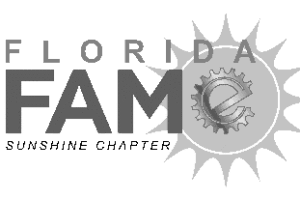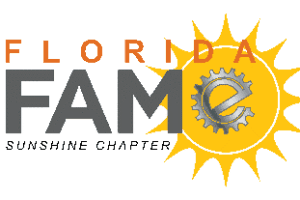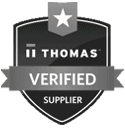Deep-Drawn Manufacturing Glossary From Hudson Technologies
- Home
- Deep-Drawn Manufacturing Glossary From Hudson Technologies
As a leading U.S. manufacturer of deep-drawn metal enclosures and metal stampings, Hudson Technologies produces precision diaphragms and cases in any production volume. Our catalog has more than 15,000 standard shapes and sizes available with existing tooling to mitigate setup costs, and we can customize tooling for unique customer designs.
Glossary of Terms
Using our industry expertise, we’ve compiled and defined the following list of common terminology to assist our customers in understanding our processes and capabilities.
Process Terms
Annealing – The annealing process alters the properties of a metal material through the application of heat. This heat treatment process heats the material to a point where the internal grains of the metal will recrystallize, then cools the metal at a controlled rate to allow the development of new, stress-free grains. Annealing is typically used to improve the ductility and reduce the hardness of a metal part after it has been subjected to cold working processes and undergone work hardening. Hard materials are more brittle by nature, so annealing enables additional pressing or bending without the risk of fracturing the workpiece.
Deep drawing/deep-drawn stamping – A subset of metal drawing, deep-drawn stamping is a specific form of metal stamping used to create hollow box-shaped or cylindrical parts with curved, straight, or tapered sides. Relying on radial tension and tangential compression, deep drawing process pulls flat sheet metal into a die cavity to create a recess equal to or greater than the minimum width of the part. Deep drawing may use a series of dies to further reduce the diameter or increase the length of the part.
Finishing – In general, finishing processes change the surface of a metal object in some way. Such processes may include abrasive blasting, painting, coating, polishing, or plating, among others. The reasons for metal finishing may vary, such as enhancing aesthetics, removing surface imperfections from the substrate, cleaning surfaces, adding corrosion resistance or other mechanical properties, and more.
Hardening/work hardening – Deep drawing is a cold working process, which means it is conducted at room temperature. Cold working metals causes work hardening, in which the strained grains of the metal cross each other and begin to resist further forming operations. While work hardening is often beneficial for final parts, hardened materials must often be relieved of stress through annealing or other heat treatment processes intermittently to allow additional forming operations during fabrication. For completed parts, work-hardened surfaces are typically stronger with better surface finishes.
Metal drawing – The metal drawing process shapes components by drawing a metal blank through a die using a mechanical grip. As the workpiece is pulled through the die, it begins to form a hollow box or cylinder, depending on the die shape. Drawing the workpiece through additional dies will further reduce its diameter and increase its length. Forming longer parts through metal drawing is often referred to as deep drawing.
Manufacturing Terms
Standard – Standard parts are made to specific industry or OEM specifications. Standard parts and components are designed as a general solution that will work with common equipment straight out of the box. These parts can typically be located by part number in our catalog.
Punches – Punching is a metal fabrication process that uses a punching die to create a hole in a metal workpiece by removing a scrap slug. Punching dies, more commonly known as punches, are made of extremely hard tool steel and can easily punch through most common metals with enough applied force. Punches must be selected per project specifications, as the diameter of the punch ultimately determines the size of the hole in the workpiece.
Die or dies – The term “die” may refer to any number of specialty precision tools used to cut or otherwise form metal blanks and sheet metal during the metal stamping process. The forming or cutting sections are fabricated from an extremely hard specialty steel known as tool steel, though some forming and cutting parts may be fabricated from other hard steels. Dies are complex tools created from a variety of components and are expensive to fabricate. As such, they account for much of a project’s upfront costs.
Blank – A blank is a flat piece of metal used as a base for further forming operations. The blanking process creates blanks by cutting them out of a larger section of sheet metal at a predetermined size in accordance with the requirements of the design to be stamped. If a blank is too large, it generates excess waste and drives up costs. If it’s too small, it may impact the efficacy of stamping operations.
See our tooling and equipment pages for more in-depth information.
Product Types
Components – The word “component” may refer to any smaller element that makes up a larger system. Metal drawing and deep drawing are used to produce a wide variety of metal components used in electronics and implantable medical devices.
Diaphragms – Metal diaphragms are thinly cut, circular plates used as precision seals within closed process systems. When exposed to pressure or axial loading forces, metal diaphragms undergo elastic distortion that provides a tight seal. These versatile solutions are used across a wide range of industries as pressure regulators, barriers between process materials, membranes in fluid pumping systems, and much more.
Enclosure or case – A metal enclosure, often called a case, surrounds some other type of components to provide protection from external elements, such as contaminants, moisture, and more. Battery cases are one example of a metal enclosure.
Machinery
Transfer press – A transfer press contains multiple stamping stations, each performing a successive operation until a completed part is produced. Transfer presses move the workpiece between stations using an automated mechanical transport system. Transfer presses are ideal for situations where parts must be cut free from the material strip and formed, such as with oversized parts or components with unusual geometries.
Tooling
Custom tooling – Where standard tooling produces components produced to common industry standards or pre-established catalog definitions, custom tooling refers to stamping dies that are created to serve unique designs. Custom tooling may be built from scratch or may be modified from standard tooling to cut costs.
Progressive die tooling – Progressive die tooling compiles all the required tooling into a single complex die used within a single press. A strip of metal progresses through each operation within the die until the final part is cut from the strip on the last process and ejected from the press. Progressive die tooling facilitates fast and accurate high-volume production.
Stage tooling – Stage tooling uses multiple tools on a single press, but tooling must be manually changed between each operation. Stage tooling is the most affordable tooling type, but also has a higher cost per part due to the slow speed of the process.
Transfer press tooling – Transfer press tooling is spread across multiple operation stations. The first transfer station receives a metal strip from which it cuts a blank, then each subsequent transfer station may contain a single die or multiple dies, depending on the operations being performed.
Deep-Drawn Manufacturing from Hudson Technologies
For more information about any of this terminology or our capabilities, please visit our Frequently Asked Questions page. If you can’t find the answer to your question, feel free to submit a question to our experts using the form at the top of the FAQ page. For standard parts, please visit our catalog and tooling page. For any other inquiries, please contact us.






















